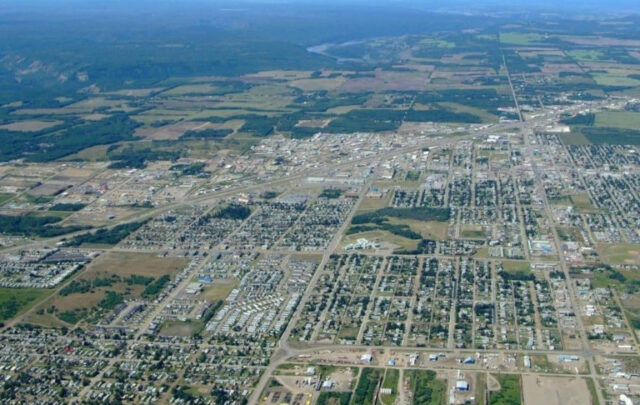A flurry of new mainstream media articles telling people not to worry about Peak Oil and hydrocarbon depletion have begun appearing on financial sites like Bloomberg, Forbes or The Wall Street Journal. Peak Oil is the point when global oil production reaches its maximum, plateaus, then eventually begins declining. According to the IEA, conventional oil production peaked in 2006. World all-liquids production has been on a plateau since 2005, and should soon start declining. “All liquids” includes unconventional sources such as tar sands, ultra deep water, and shale, which the media is championing as ushering in a new era of abundance. Just to set the record straight, I though it would be worthwhile to analyze some of their arguments. At least some media outlets are willing to even discuss peak oil at all—most remain completely silent.
One Bloomberg article, “Peak Oil Scare Fades as Shale, Deepwater Wells Gush Crude,” by Joe Carrol, claims that “more than 2 trillion barrels of untouched crude is still locked in the ground,” and that “technological advances enable companies to image, drill, and shatter subterranean rocks with precision never dreamed of in decades past.” The article then goes on to cite the oil sands of Northern Alberta. What the article doesn’t discuss, however, is the key concepts of EROEI and flow rate. Unconventional resources, even with modern technology, always take far more energy to extract, which diminishes returns, and the flow rate is much lower.
Another Bloomberg article by Eric Roston argues that tar sands and shale gas show that there is no need to worry about peak oil, although the article admits that (high flow rate) conventional oil has probably already peaked (it has). Bob Lutz of Forbes describes a Houston oil & gas conference he attended, where “company after company, executive upon oil economist, all described the coming flood of North American oil and gas discovery and production… whether shale gas or Canadian bitumen, the Bakken field in North Dakota and Southern Canada, coupled with advanced new exploration and extraction technology, it was a scenario of abundance.” This is the same mantra as another Bloomberg article, “Peak Oil—No Longer the Right Question,” which also sites shale gas, tar sands, and deepwater.
The main fallacy in the articles’ logic is that peak oil isn’t about running out of oil, it is about having to use a bit less oil every year, when our growth-based economies were used to a bit more each year. The significance is the end of growth as the biggest shock to oil dependent economies, not “running out.” The Carroll article even says “we will not run out of oil in my lifetime, your lifetime, our children’s lifetimes or our grandchildren’s lifetimes.” According to Matthew R. Simmons, former energy advisor to George Bush, Houston investment banker, and author of the book “Twilight in the Desert: The Coming Saudi Oil Shock and the World Economy,” which accurately predicted the 2008 oil shock of $147 a barrel and subsequent global economic implosion, “we’ll never run out.” “Never.” There’s a tail to the peak oil logistic distribution curve that can go on for centuries. What matters is flow rates and how much money and energy it takes to mine the resource. So if we are forced to use a lot less, that is still a problem.
All-liquids oil production is now at an all time high of about 89 million barrels a day, and will soon enter terminal decline of a few percent per year according to Dr. Robert Hirsch. Even a former head of the IEA admits that 90-95 will be the absolute max, in spite of the fact that as recently as 2005 the IEA was predicting demand to be met at 120 million barrels a day by 2030. Obama’s recent State of the Union speech echoes the articles, citing “almost 100 years” of natural gas due to fracking technology, and that domestic oil production is back to 2004 levels. Indeed, new horizontal well and hydro-fracking drilling technology has opened up new reserves, but these resources tend to be expensive in terms of both money and energy, and are limited in flow rate. In other words, we can’t use the stuff quickly. An analogy would be someone living off a savings of millions of dollars, but only being able to withdraw a few hundred dollars a month.
U.S. oil extraction rates are indeed back to 2004 levels, after 23 years of falling every year. This is in part due to an oil boom in North Dakota, which is now the one corner of the country with 3 percent unemployment and growth. This shale formation only produced 111 million barrels of oil up until 2008 — or in other words, over 50 years of extraction, only enough oil was pulled up to meet U.S. needs for 6 days. This deposit is now producing about a half million barrels a day, a massive increase due to horizontal drilling and fracking technology—but will likely peak by 2015 at below one million barrels a day. Not much compared to the 21 million barrels a day the U.S. was using in 2006, and 19 million today in our downsized economy. And Alaska and other areas are steadily declining.
As for the Canadian Tar sands and Shale gas, there is a similar story. The oil sands is solid earth with about ten percent bitumen, which must be strip mined, heated, processed, and treated with large amounts of fresh water. The process is so energy intensive, it barely has a positive EROEI, meaning that its only use to us would be as a way of converting natural gas into a liquid fuel—and North American conventional gas has been declining since the 1970s. They are also working tirelessly, 24/7, to produce about 1.5 million barrels a day—not much compared to the global consumption rate of 89 mbpd. That’s less than 2 percent, and assumes enough fresh water and natural gas exists to continue to produce that much. A “crash program” may yield 3 million barrels a day by 2030—but this would still mean a global 75 mbpd flow rate, max, in 2030, optimistically. And demand by then will be over 100 mbpd, even with perpetual recession curbing growth in demand. Think peasants on scooters in Third World societies that use very little and derive a greater economic value from the fuel.
“Shale gas,” in contrast, may be a bit more promising, and indeed, natural gas prices are now only $2.50 per million BTU, compared with Brent crude, the world benchmark price for oil, now at $116 on the NYMEX, or $20 per million BTU. This is a great deal right now, especially for power generation, but prices likely won’t remain low for much longer. Conventional gas is declining, and an unprecedented amount of fracking shale plays would be needed to cancel this out. The recession has reduced industrial demand in North America, but in Asia gas is $14 per million BTU. In fact, the EIA recently downgraded the large Marcellus shale’s technically recoverable resources to 141 tcf, just a 6 year supply, from a previous 410 tcf. The “hundred year” estimate is absurd, and the flow rate and EROEI don’t even justify drilling at these prices. Natural gas is probably in better shape than coal, and especially oil, but it too is likely to soon begin slowly declining. Clearly, growth has ended, and the future will be fueled by something other than fossil fuels.
Zachary Moitoza has been a resident of Eugene, OR, since 2005, the year he began attending the University of Oregon (Go Ducks!). He is the author of the book “The Nuclear Economy: Why Only Nuclear Power Can Revitalize The Economy And Environment,” a realization he came to after years of careful research on the energy scene. Zachary can be reached at zmoitoza AT yahoo DOT com





